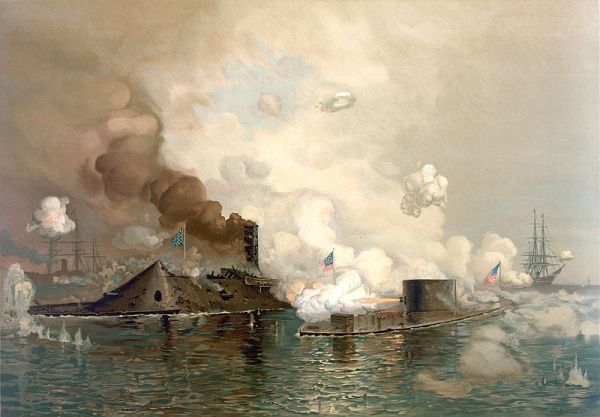
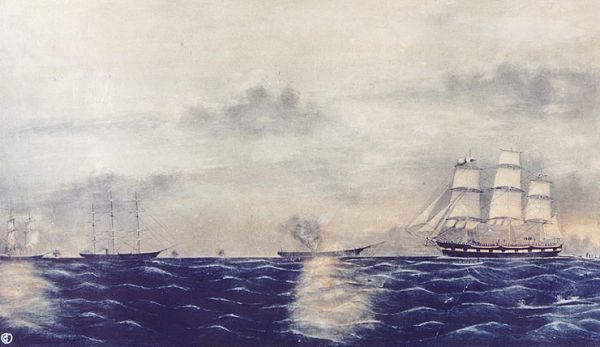
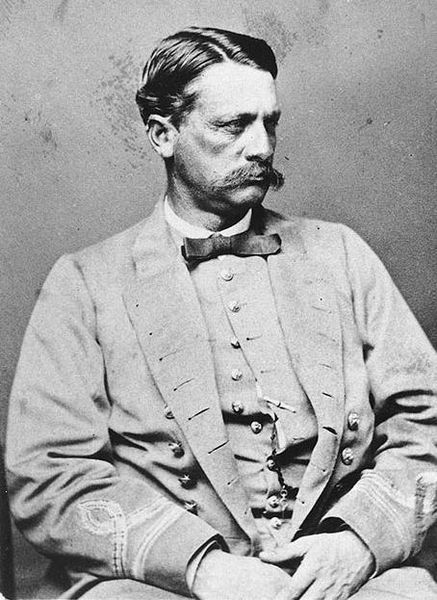 Among these Confederate commerce raiders, the most far-ranging was the CSS Shenandoah. During its year-long voyage, it traveled as far as Australia and the Bering Sea. It was the only Confederate warship to circumnavigate the globe.
Among these Confederate commerce raiders, the most far-ranging was the CSS Shenandoah. During its year-long voyage, it traveled as far as Australia and the Bering Sea. It was the only Confederate warship to circumnavigate the globe.Confederate agents purchased it in Britain and, in September 1864, sailed it out unarmed to the Portuguese island of Madeira. There it met another vessel which had been shipped with cannons and a crew. The crew of 73, led by Captain James Waddell (left), raised the Confederate ensign and went hunting.
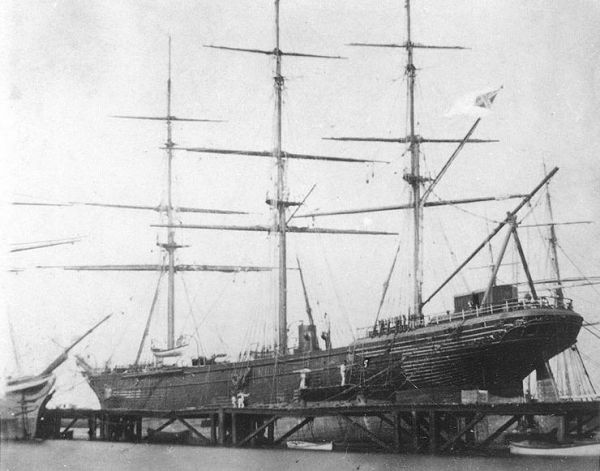
By then, it was June of 1865. General Lee had surrendered his army. President Davis had been captured. General Johnston was negotiating the surrender of his army. For all practical purposes, the Confederacy had ceased to exist. Captain Waddell encountered these reports, even far away in the middle of the Pacific Ocean.
He didn’t believe them and sailed on. This time, he turned south, planning to strike at the coast of California. Finally, in August, a British merchant captain convinced him that the war was truly over. Without a government to fight for, the Shenandoah could not legally continue to wage war. So Waddell dismantled the cannons, hauled down the Confederate colors, and sailed to Britain. He surrendered the ship to British authorities on November 6, 1865.
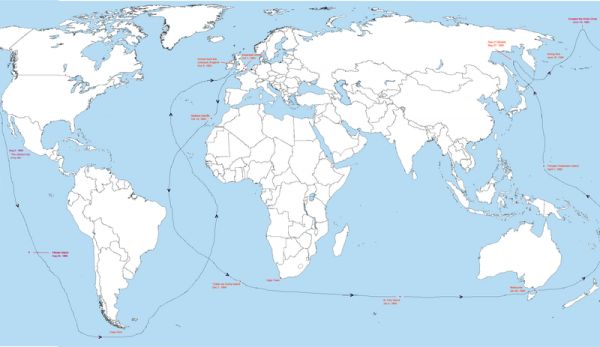

No comments:
Post a Comment